
Mokelumne Wilderness
 |
Round Top Ascent Mokelumne Wilderness |
July 23, 2007
Although this trail has been a personal favorite for over 30 years,
I never have made the final ascent to the summit of Round Top. This is
to be the day.
The first mile is shady but unremarkable. Bypassing the spur to Frog Lake, companions Ali and Phil head directly for our objective.
The big meadow has more flowers than were present during my visit a month ago. The cow parsnips finally have appeared, and the lupine have grown taller.
Not tarrying at Winnemucca Lake on this occasion, we turn westward for
a 400-foot uphill trek to Round Top Lake. Although two creeks
are flowing from the snow banks on the north face of the mountain, this
trail segment always seems relatively hot and dry. A Clark's nutcracker
entertains us for a time, and I spot a bee doing its thing on a ranger's button.

A Clark's Nutcracker — quite a remarkable species

Mountain Monardella are everywhere
A rare phenomenon has developed directly above Round Top itself. As the effect seems lessened after removing my sunglasses, I quickly affix a polarizing filter to the camera to capture the full colors. Although my companions seem unimpressed, I know that this is an uncommon happening; the upward curvature of the colored band is not the stuff of your average rainbow.
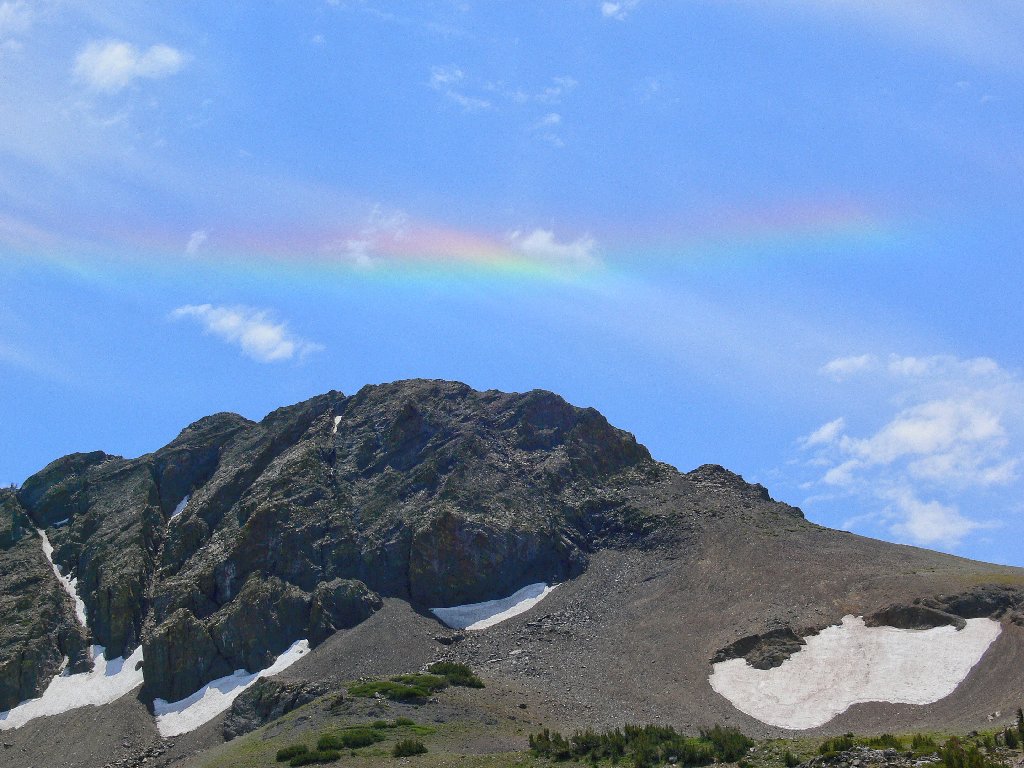
An Ice Halo — a truly rare treat
Round Top Lake is an unusual dark green color — presumably due to the
orangish tint of its sandy bottom. On the lake's near side is the beginning
of a thousand-foot ascent on an unofficial trail. Barren though
this route may appear, sporadic patches of flowers do adorn the hillside.
A pleasant creek below us on the right merits later exploration. From the top of the saddle there are some great new views, including the Crystal Range and Lake Tahoe far to the north.
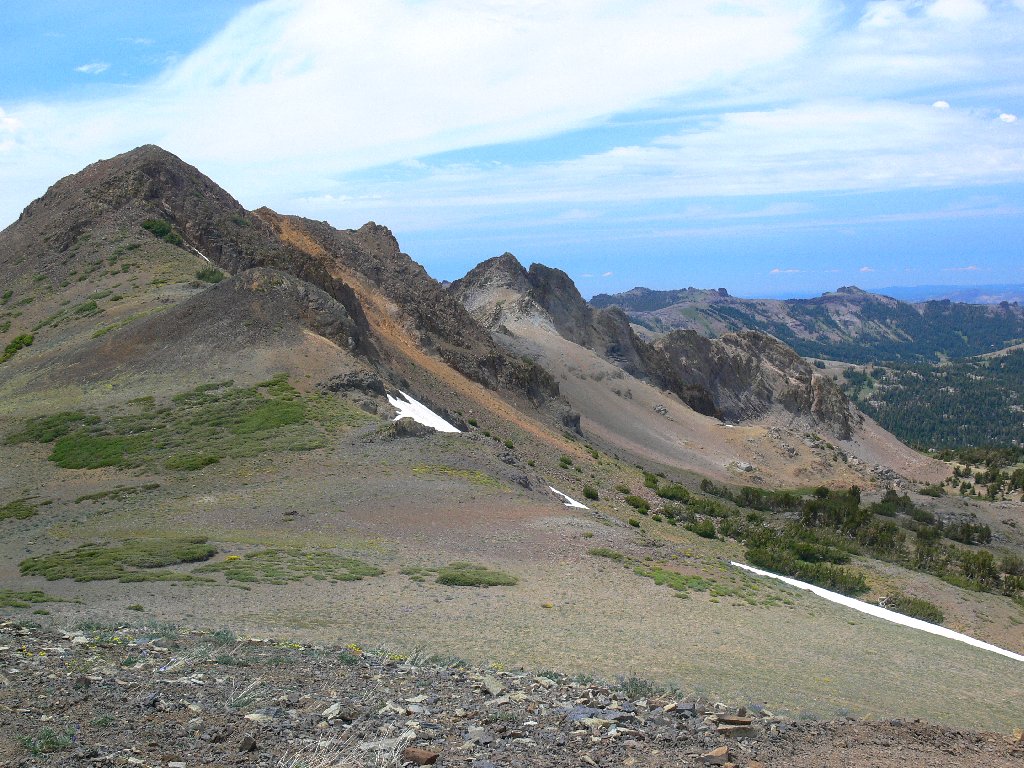
The Sisters, 10158' and 10045'

Round Top Lake and Caples Lake on the left, Big Blue in the upper right
At the base of the first rock outcropping are usage trails in both
directions. Opting for the right-hand path, we presently
incur a hands-on climb up a 50-foot volcanic wall,
during which I am compelled to remove my gold wedding band in order to
avoid scratching it on the rocks. This is followed by a tricky
slope of loose talus; thereafter it is a pretty easy scramble.

Almost there — only another couple hundred feet
At the top, the vista is predictably glorious. This is easily one of the most scenic viewpoints in the Northern Sierra.
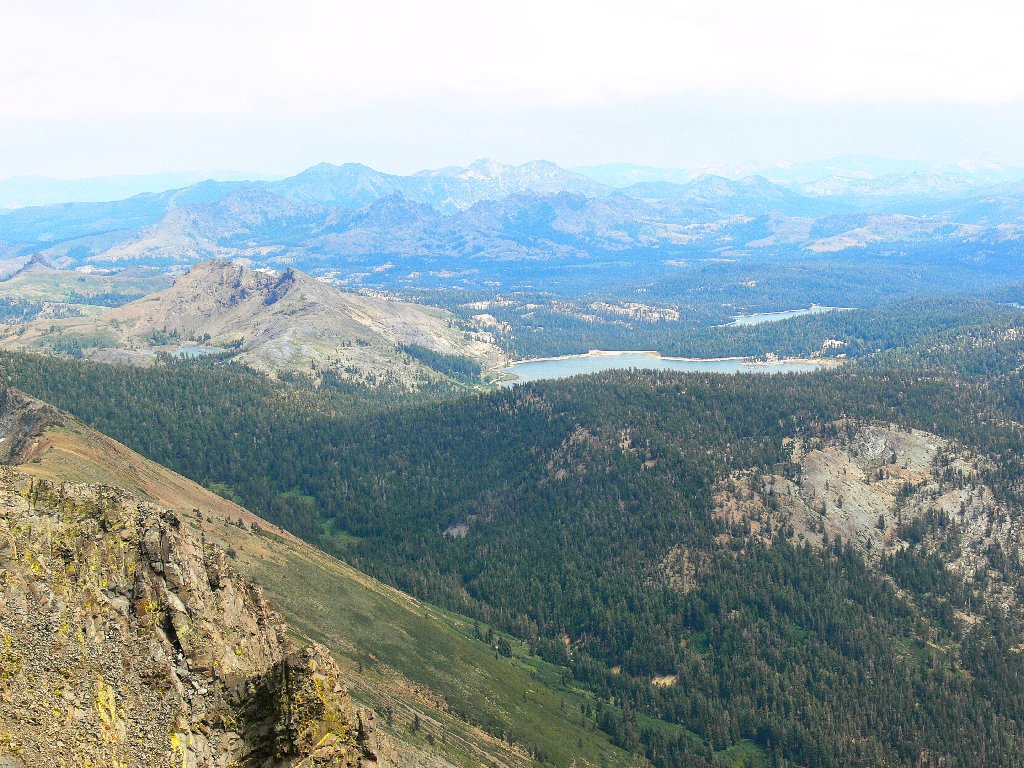
The Blue Lakes region to the southeast
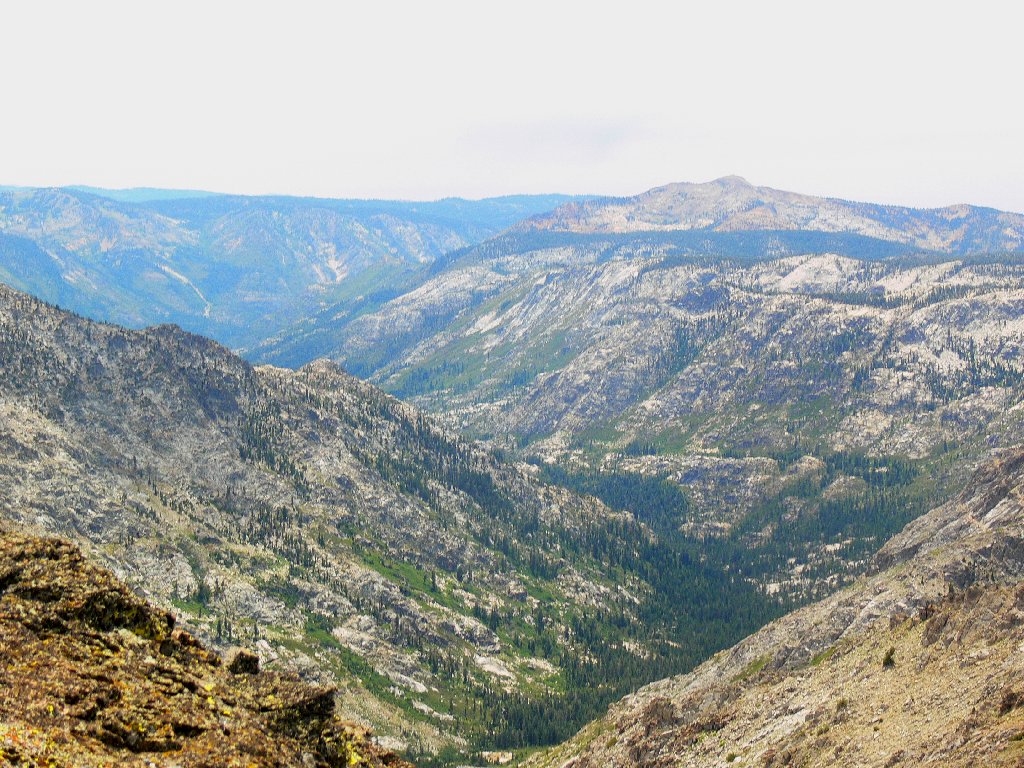
Summit City Creek Canyon to the southwest
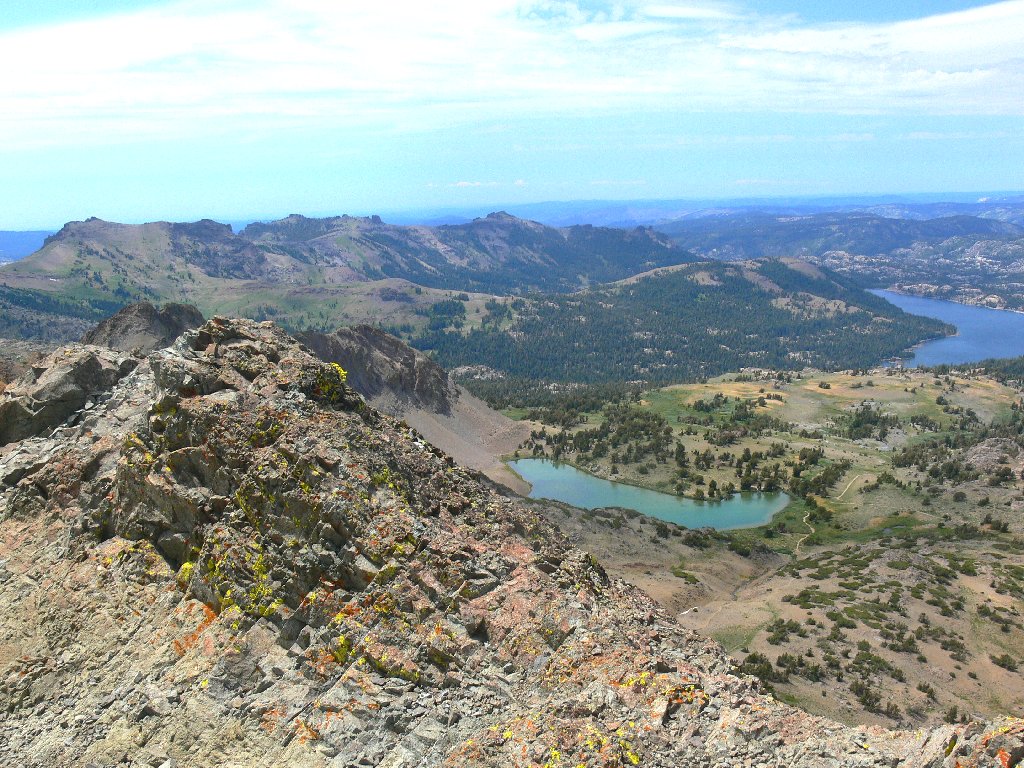
Flat-topped Thunder Mountain in the west
Unfortunately, this is not the true summit. Achieving that point involves negotiating a deep chasm between the peaks. It is somewhat scary up here, and an occasionally stiff breeze doesn't help the cause.

Ali challenges the true summit
Although we have had the summit entirely to ourselves, after an hour or so it is time to leave. Any anxiety over a descent of the dreaded rock wall is dispelled when a less intimidating return route presents itself on the northern side of the ridge line; in fact, no climbing is necessary at all!
Phil finds the trekking pole that he had misplaced during our problematic ascent. Once off that hairy slope it is possible to relax, although the subsequent steep and slippery downhill segment necessitates careful footing. The sky above is virtually overcast now; perhaps it will rain tonight.
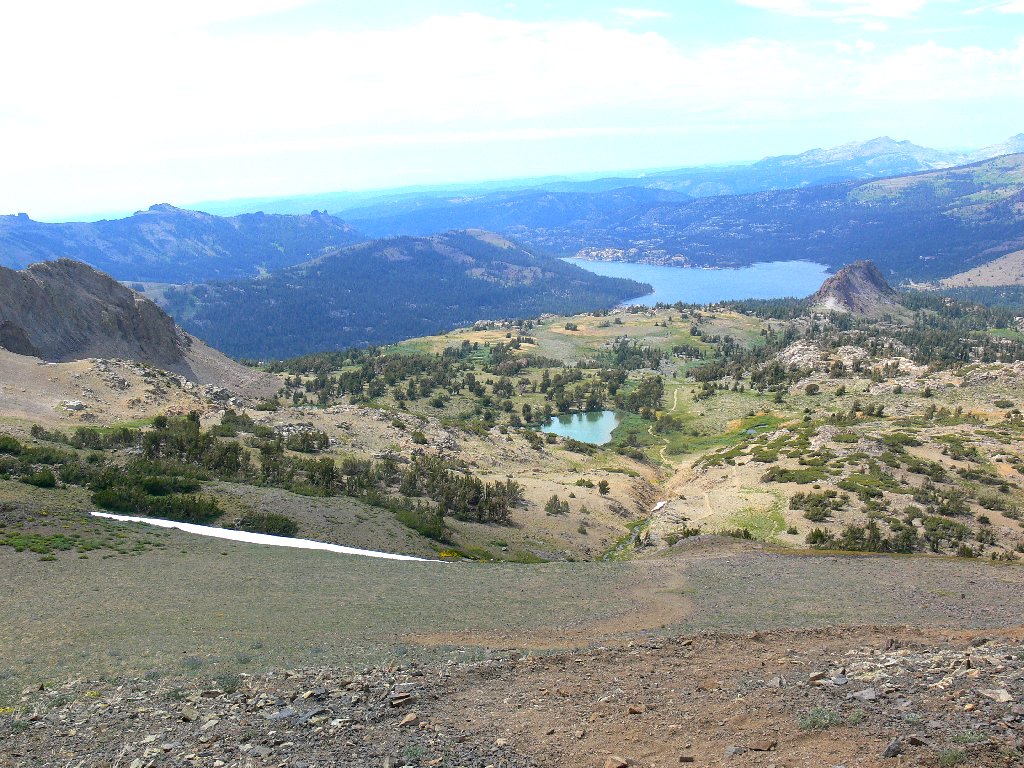
Heading back down toward distant Pyramid Peak
The pretty little stream is still there. This is a good time to refill
water bottles before heading down the creek-side path, as nearly four
miles of trail remain and the temperature is in the seventies.
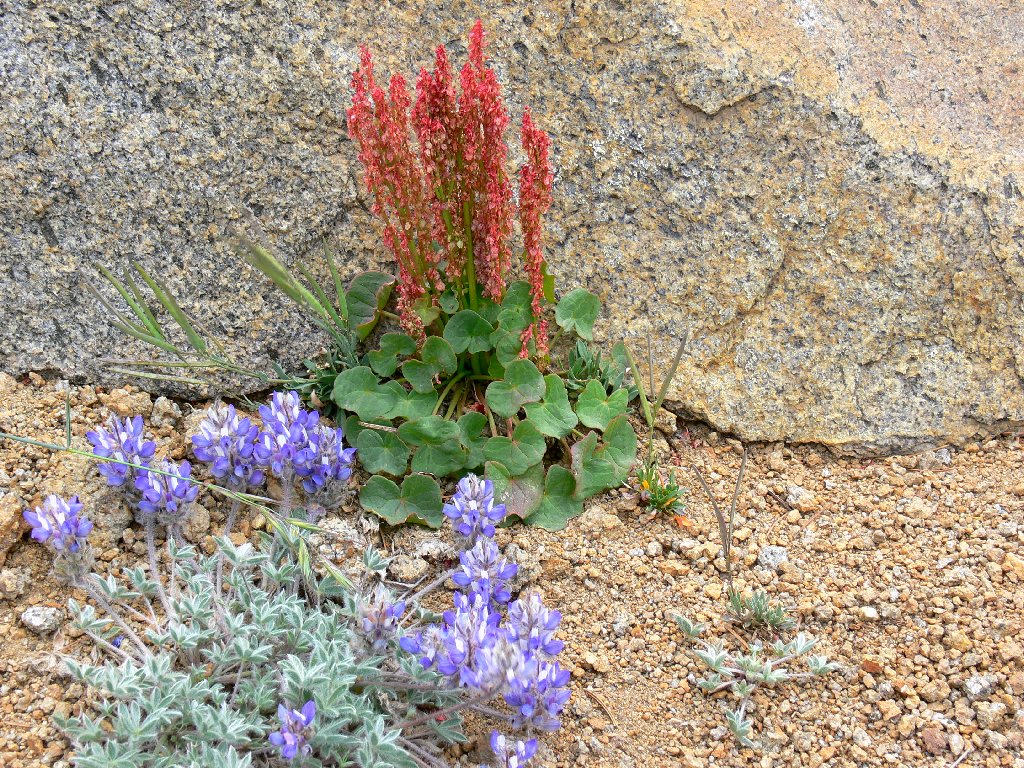
Mountain Sorrel among the Brewer's Lupine
New flower varieties abound in this miniature ecosystem. A single
patch of western spring beauties has sprouted from the recent snow melt.
The real show-stoppers, however, are the brilliantly hued monkeyflowers.

Primates meet Monkeyflowers — Darwin's delight
When I last hiked the section between Round Top Lake and Winnemucca Lake, the only noteworthy plants were patches of phlox. Today, however, this area is a garden paradise. In places one cannot so much as step off the trail without crushing something beautiful. The variety is so great that I cannot identify all the species.
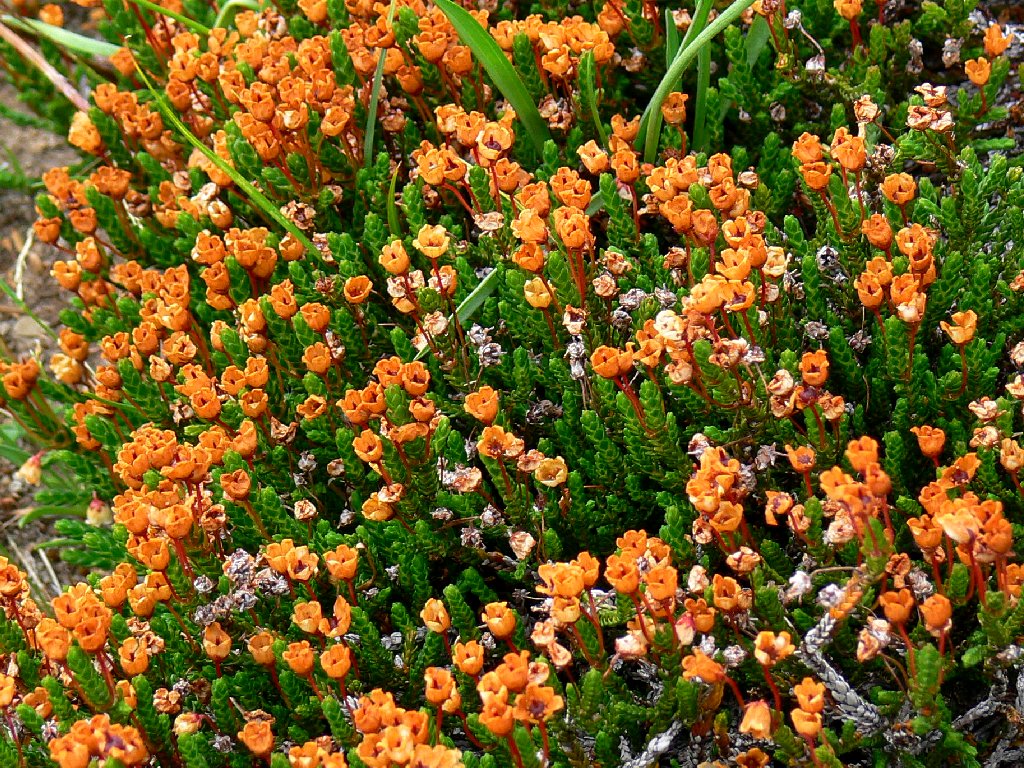
White Mountain Heather — or at least they used to be
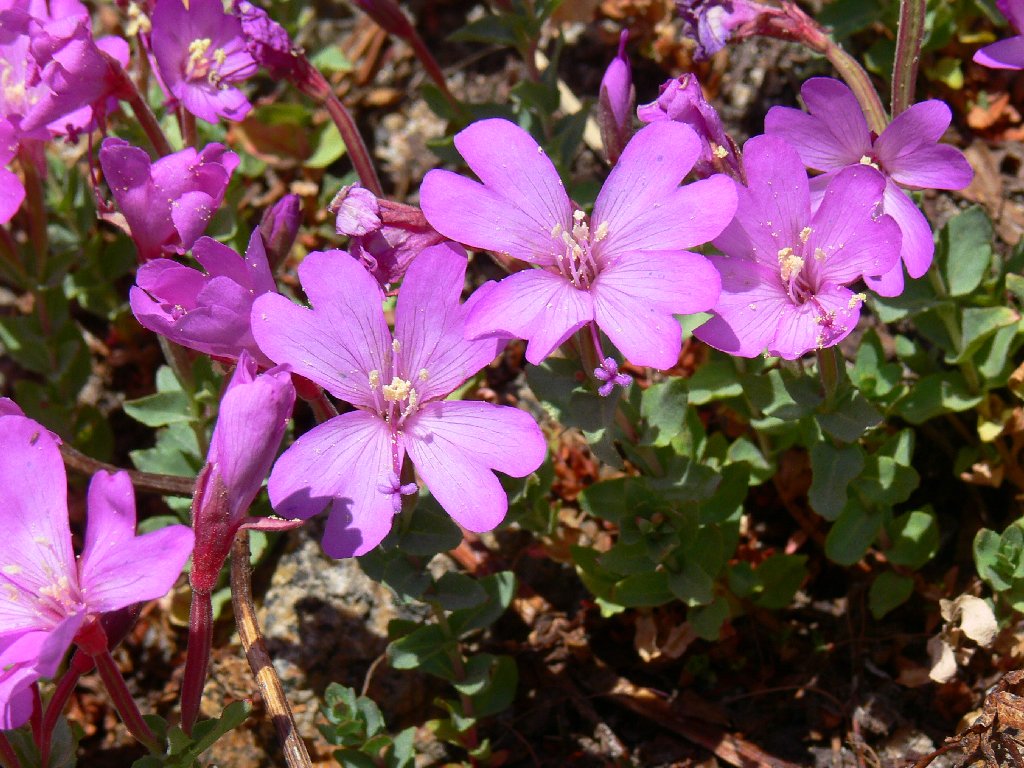
The thousands of Rock Fringe have heart-shaped leaves
I spot a white flower type that someone at summitpost.org calls a Sunday Peak Cinquefoil, because that's where it was photographed a month ago today. These are commonly known as sticky cinquefoil, and touching a stem explains the name.
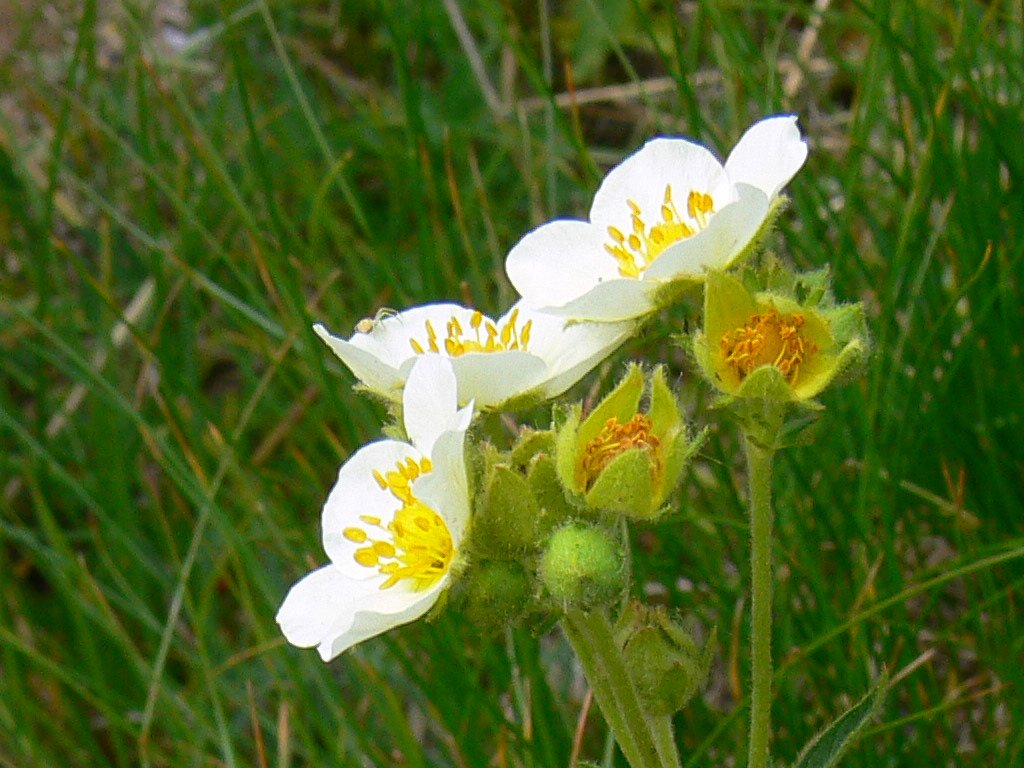
Sticky Cinquefoil, with spider
A glance up at the mountain imparts feelings of accomplishment, and of joy at just being here.

Exquisite lighting under the clouds
Two more miles. It is about 5 p.m., a perfect time to be on the trail. Of course, a few more photo stops are in order, including a visit to the spring that feeds the big meadow. A final breather at Frog Lake enables us to complete our memorable odyssey.

The usual suspects are at the spring

More great lighting at Frog Lake
§: What a fine day this was! Good company, perfect weather,
and lots of nice flowers.
Hikers' note: at the top of the saddle on the way up, veer left at the
first rock outcropping — unless you are anxious to log some additional
talus-hopping exercise or mountain-climbing practice.
| Scenery |  |
| Difficulty |  |
| Personality |  |
| Solitude |  |

Here are some details on the 'rainbow' in the sky:
Subsequent research has identified this as a circumhorizon arc,
which forms only under specific conditions regarding the sun's angle and the
orientation of ice crystals in cirrus clouds at a certain height above the
earth. In fact, it is not actually a rainbow at all. Note the
seeming spectrum-reversal, with the red hues being on the inside of
the upward curve; in rainbows, those colors are on the outside edge.
More information about this and other atmospheric phenomena is available at: www.atoptics.co.uk